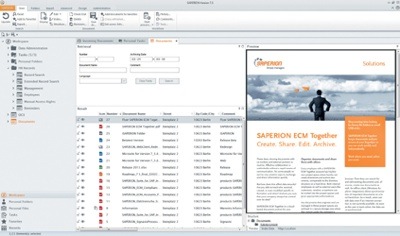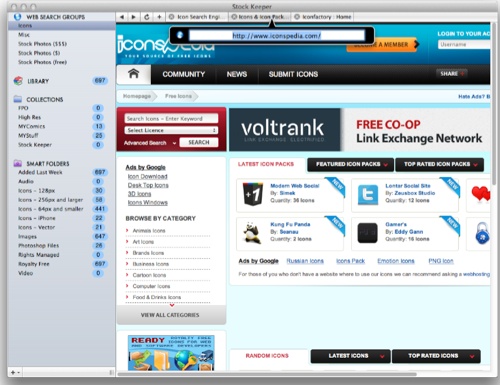In May Saperion (www.Saperion.com) will start deliveries of version 7.5 of its ECM Suite. Saperion ECM Together will be the company’s first cloud-based file and sharing solution.
E-Mail Lifecycle Management (ELM) uses tagging to archive e-mails and also supports Exchange Web Services. The Saperion Web Client contains new functions and Saperion ECM Consolidation Services permits direct access to third-party electronic archives.
Saperion ECM Together is a digital archive in the cloud for corporate documents. This product is designed to securely store business-critical data while simultaneously enabling access from virtually any location.
Saperion ECM Together is designed to make it easy to integrate users into business processes, access important records, and collaborate with others on documents. In addition to the cloud-based SaaS solution, Saperion offers another version for internal, on-premise installation that integrates seamlessly into Saperion ECM installations.
Instead of MAPI, the new version of Saperion ECM uses Exchange Web Services (EWS) as the e-mail archiving protocol. This allows the use of tagging to quickly archive e-mails into previously defined archives or records, the company says. An index form facilitates flexible assignment of keywords to e-mails.
The Saperion Web Client has expanded functionality in version 7.5. Documents can now be e-mailed directly from within the Web Client in order to more quickly involve external employees, customers, and partners in business processes. Customizing web-based Saperion solutions through the Web Client has become more straightforward and update options have been improved and made more convenient.
Saperion ECM Consolidation Services enable secure and direct access to existing archives for replacement of older systems. The original software is no longer needed, so operating and maintenance costs are reduced from the beginning. In addition to existing connectors for the IXOS/OpenText and EASY archive systems, the new version 7.5 now offers direct access to IBM/FileNet archives as well.




